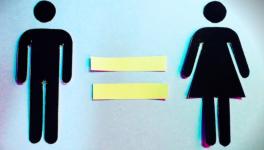Policing in India Report: Prevalence of Gender Bias and Inequality

One in four male police personnel is highly biased against women in police, according to the Status of Policing in India Report (SPIR) 2019. The report is based on surveys conducted by Common Cause, Tata Trusts, Centre for the Study of Developing Societies (CSDS), and Lokniti, and was published on August 27, 2019. Researchers interviewed 11,834 police personnel across 105 locations from 21 states between February and April 2019. The survey covered the personnel’s opinions over adequacy of police infrastructure and their perception of several types of crimes and different sections of society.
The report says, “When we compared the responses of male police personnel with those of females, we found a significant difference. Men in police were found to harbour much stronger stereotypes compared to their female counterparts. Male police personnel are more likely to agree with the gender-stereotypical statements, while police women are much more likely to disagree with such statements.”
The report points out that integration of women in police, aside from ensuring fair representation and diversity, is known to have positive impact on the police structure. It says that studies have indicated that increasing female representation in the police is directly associated with increased reporting of violent crimes against women and decreased domestic violence. Having more female officers also positively affect police-community relationships and the overall performance of the police.
According to a research paper published in the Women and Criminal Justice Journal in the year 2007, female officers are less likely to be named in citizen complaints, as compared to male officers; female officers are less likely to have allegations of using excessive force against them, and just the presence of female officers can reduce the use of force among other officers.
SPIR 2019 notes that despite all these indicators, representation of women in the Indian police continues to be very poor, at just 7.28%. It says, “Police forces in India lack gender sensitivity, failing to address the needs of women within the police forces. The lack of women’s representation in the police further contributes to the reinforcement of gender stereotypes, and intensified biases, against both, women within the police as well as women who have an interface with the police.”
According to the report, 48% of the female police personnel do not get any weekly off, while 29% get only one day off in a week. In states like Odisha and Chhattisgarh, the situation is abysmal, with 95% and 90% women police respectively reporting that they do not get any weekly off. The report says, “Gender inequality in our society imposes a ‘double burden’ on women engaged in paid work. As a result, domestic responsibilities fall disproportionately upon women, regardless of their employment status. In such a scenario, fixed work shifts and weekly rest become even more important for employed women. While data suggests that the police women are more likely to avail these facilities than their male counterparts, the percentages of women who are not getting any weekly rest is still significant, at 48 percent.”
The report also found that 41% of the women police personnel said they had to stay back ‘many times’ beyond duty hours. Further, one-third of the women reported that they had to stay at the police station ‘sometimes’ after their duty hours. 29% of the women reported ‘increasing work load’ or ‘too much of work’ as the main reason behind this. Also, 18% reported ‘emergency duties’ as the primary reason for working overtime.
The report also found that even in 2019, more than one in every five women police personnel (22%) reported not having a separate toilet at the police station. The situation is the worst in the states Bihar and Telangana, where three out of every five police-women (61% and 59% respectively) said that they do not have a separate toilet.
Further, 24% police-women said that there was no sexual harassment committee at their police station or jurisdiction. The report said, “The position is dismal throughout the country. In 13 of the surveyed States, less than three-fourth of police-women reported the existence of such a committee. Bihar’s situation was the worst, with 76 percent of police-women reporting the absence of such a committee.”
The report said that more than half of the overall police personnel surveyed admitted that men and women in police are treated ‘completely’ equally. It said, “On being asked to what extent are women and men police personnel given equal treatment, less than half of the police personnel (44 percent of the police-women and 46 percent of police men) said that they received complete equal treatment. As many as 28 per cent respondents were of the opinion that the equal treatment they received was ‘rarely’ or ‘not at all.’”
The report said, “Indian police, it appears, does not create an enabling environment for its women personnel. Neither is it a gender-friendly space, with respect to women (and transgenders), both within and outside the police force. The first conception is reinforced by the low representation of women in police. Even the work profiles of women who are part of the existing police force reflect poor gender parity.”
Get the latest reports & analysis with people's perspective on Protests, movements & deep analytical videos, discussions of the current affairs in your Telegram app. Subscribe to NewsClick's Telegram channel & get Real-Time updates on stories, as they get published on our website.
























